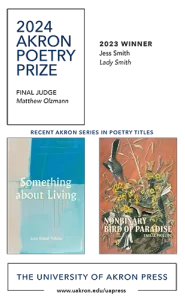The Saint Ann’s Review – Number 8
Volume 8 Number 1
Summer/Fall 2008
Biannual
Sima Rabinowitz
The cover of this issue is a delightful reproduction of a painting (oil on wood) by Jayne Holsinger whose closely examined human subjects share the vivid spirit and astute observation of much of the writing in this issue of The Saint Ann’s Review. Holsinger’s paintings are so finely etched and so sharply defined, it’s hard to believe they are created in oils. The work of 13 poets, 10 fiction writers, two essayists, an “e-interview,” several reviews, and strong artwork by three other artists match Holsinger’s gift for original and memorable image making.
The cover of this issue is a delightful reproduction of a painting (oil on wood) by Jayne Holsinger whose closely examined human subjects share the vivid spirit and astute observation of much of the writing in this issue of The Saint Ann’s Review. Holsinger’s paintings are so finely etched and so sharply defined, it’s hard to believe they are created in oils. The work of 13 poets, 10 fiction writers, two essayists, an “e-interview,” several reviews, and strong artwork by three other artists match Holsinger’s gift for original and memorable image making.
I was quite taken with an excerpt from the novel Shemsi’s Schooling by Gloria Amoury about Turkish immigrants in New York at the turn of the last century. Formal and appropriately traditional in tone, I realized what an impact Amoury’s story had on me when I awoke wondering about the fate of her characters the day after reading the excerpt. Amoury’s fiction is very much like Holsinger’s paintings, a close study of strong characters in a clearly defined landscape of objects.
Equally affecting are poems by Marc Kaminsky on bodily concerns (hunger and overeating) and chronic illness. “There are opposing // ways to tell any story,” he writes, although he has found a way to merge the options it seems to me. In “Trap,” Glen Pourciau creates a narrator who, for how much he sounds like any of us at one time or another, has an unforgettable voice: “There’s not much to tell. My wife thinks there is, but I’m the one telling it.” And Jeffrey C. Alfier’s heartbreaking poem, “Cowboys,” manages to tell a long story, a large history, and represent a vast landscape in nine brief lines:
With his package of refused letters
returned unread to him at Long Binh Jail,
he came back early from Vietnam
to the ranch he would inherit in west
Oldham County. There, he considers
the panorama unfolding around him
of worn fence posts canting in the wind,
like drunks against a balustrade, the wire
guarding the cattle his son calls by name.
A world away from a cattle ranch, on the day I finished reading the journal, I happened on a copy of this issue while browsing at McNally Jackson bookstore in Soho. It was a few days before Christmas. Here’s a great gift! Here’s a great gift! I was tempted to shout. (And I might as well have. New York is not, after all, Oldham County, and it’s likely nobody would have paid any attention.)
[www.saintannsreview.org/]




